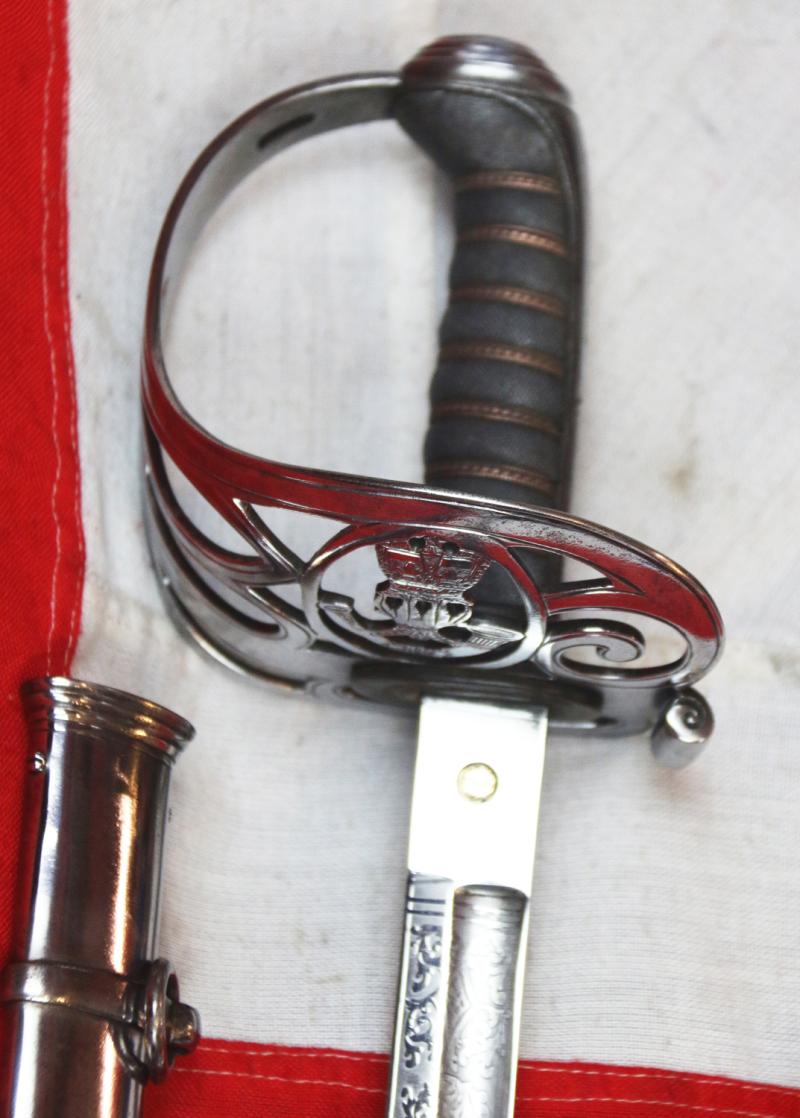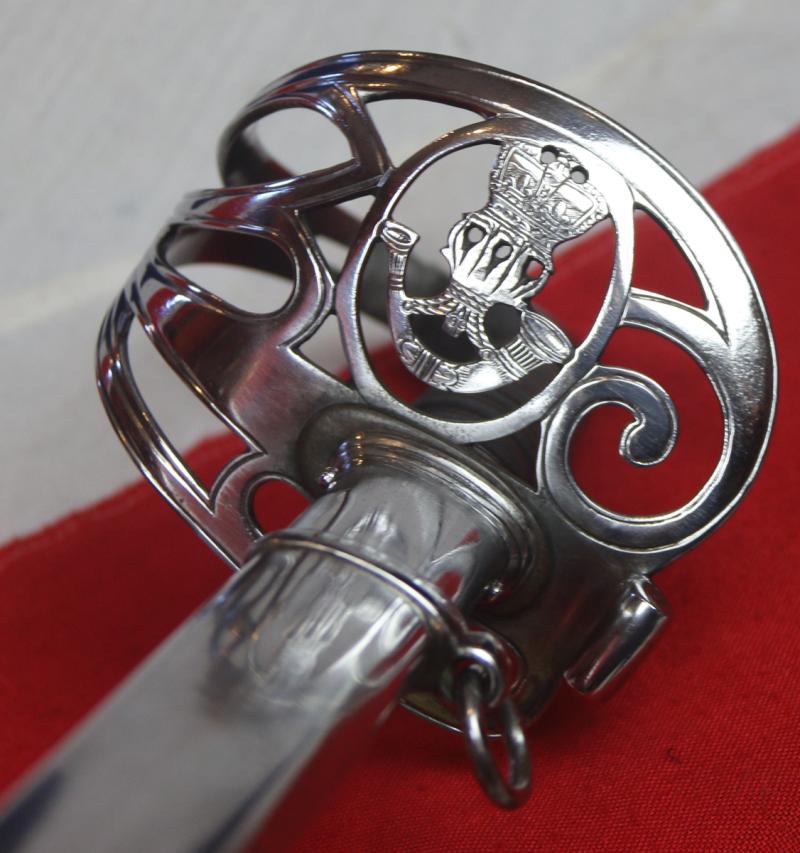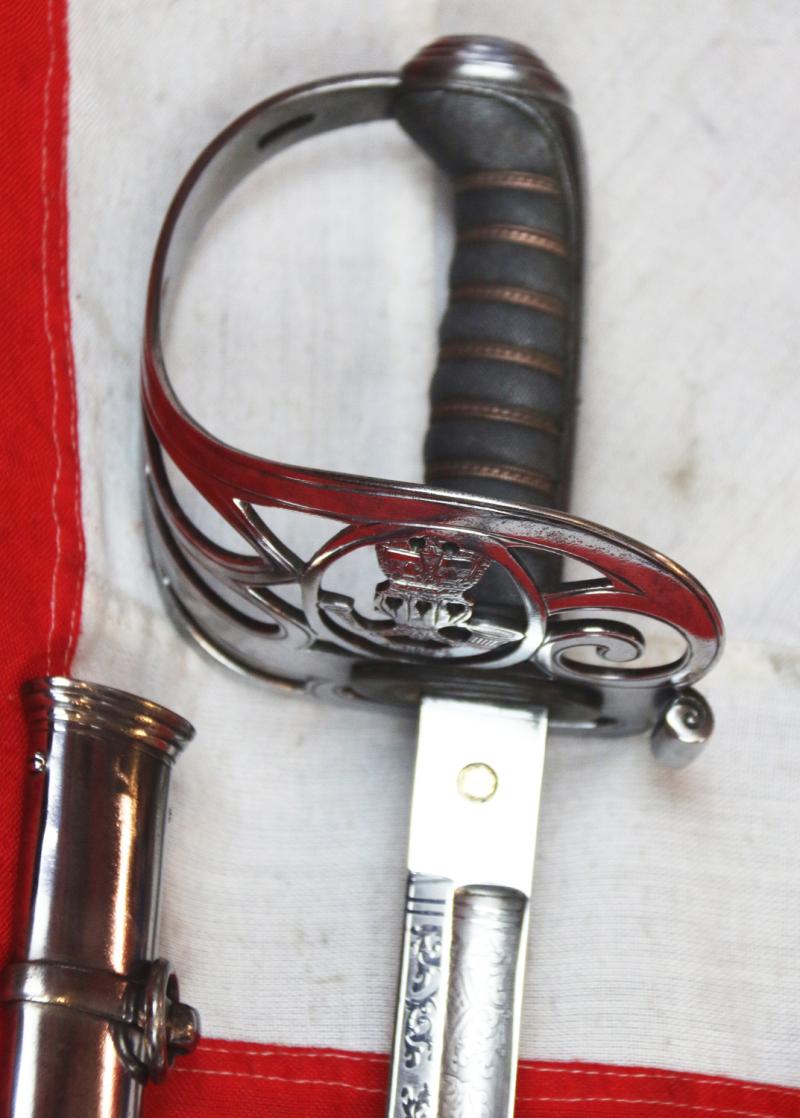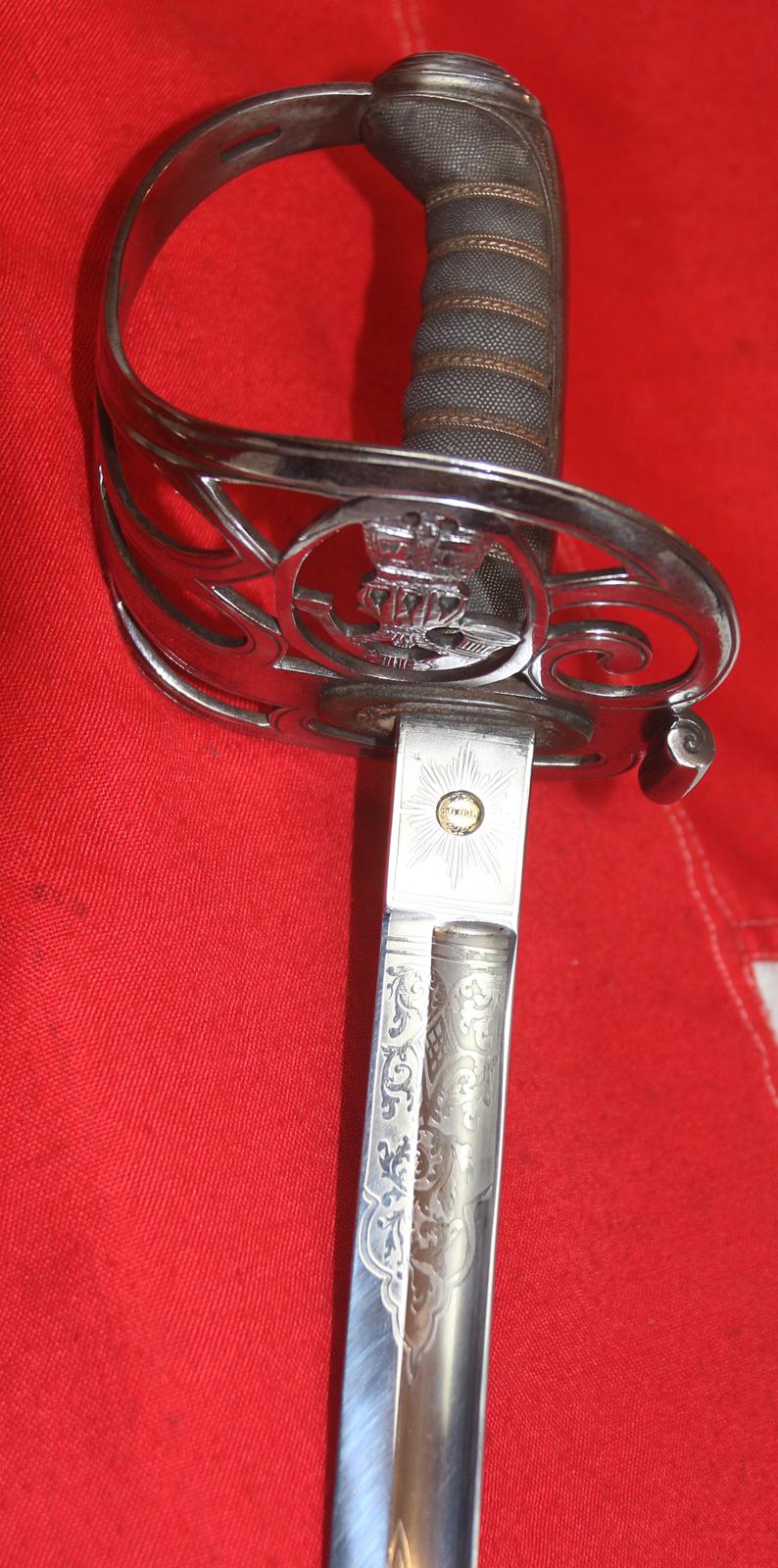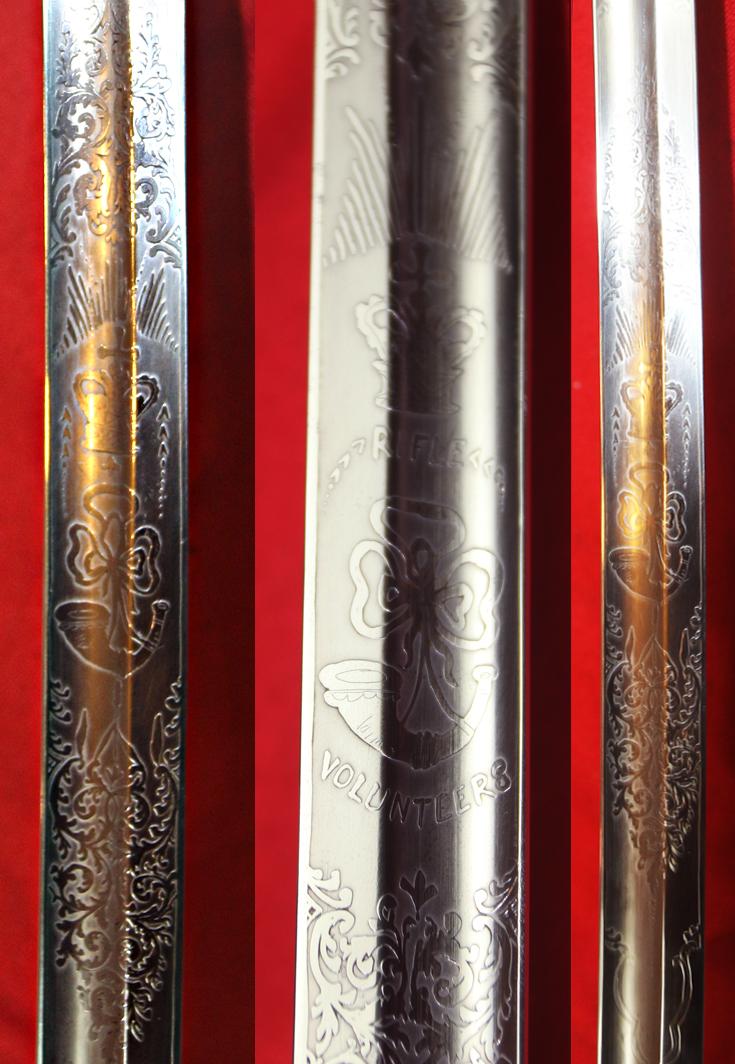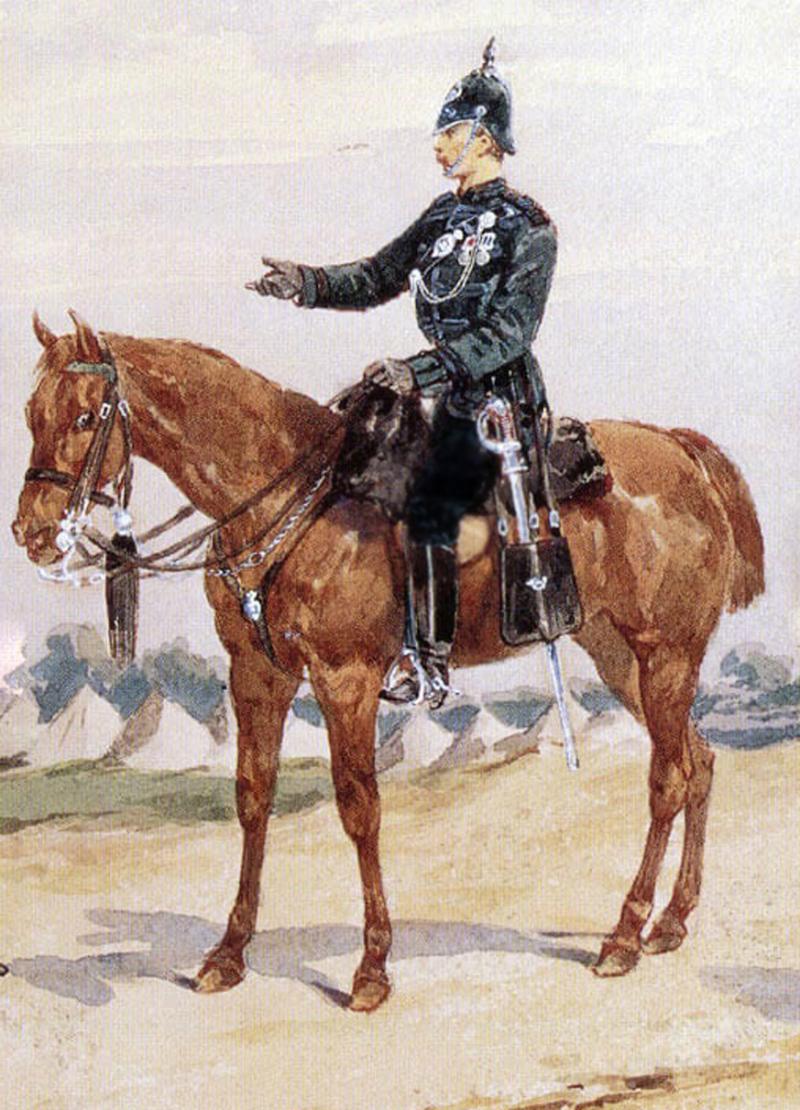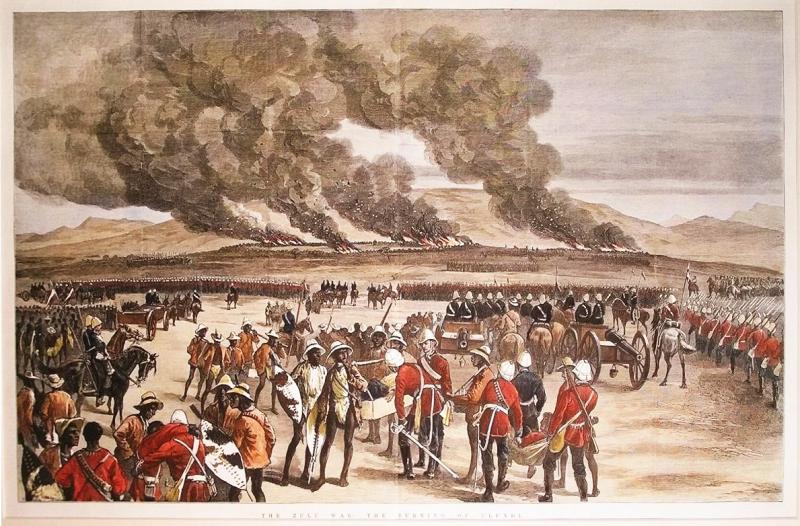A Wonderful Quality, Original, Victorian, Deluxe Grade Antique Light Infantry Rifles Officer's Combined Combat and Dress Service Sword. In Excellent Plus Condition.
Traditional, all steel pierced basket hilt, bearing the Victorian crown and Light Infantry bugle. Fully etched blade in super condition. Used by a volunteer officer that served in the Somerset Light Infantry in several conflicts including the Zulu war of 1879. The Somerset Light Infantry served in the Zulu War Battle of Ulundi with distinction.
The Regiment next saw active service in the Crimean War and played its part in suppressing the Indian Mutiny. It was at Azimgurh in 1858 that the Regiment earned its first two Victoria Crosses. They were awarded to Pte Patrick Carlin and Sgt William Napier - both for exceptional bravery in rescuing wounded colleagues under heavy enemy fire. It was also in 1858 that the Regiment formed its 2nd battalion at Winchester.
The 1st Battalion fought in the Zulu War (1877-79) when, at the Battle of Ulundi, it carried its Colours into battle for the last time. Maj William Knox Leet was awarded the Victoria Cross during this campaign.
The Battle of Ulundi took place at the Zulu capital of Ulundi (Zulu: oNdini) on 4 July 1879 and was the last major battle of the Anglo-Zulu War. The British army broke the military power of the Zulu nation by defeating the main Zulu army and immediately afterwards capturing and burning the royal kraal of oNdini.
In 1885-87 the 2nd Battalion saw its first action when it took part in the Burma War. A memorial to all those members of the Regiment who lost their lives in this conflict was erected by the Regiment and now stands in the centre of Taunton, having been moved to its present position in 1997. Meanwhile in Taunton a new Barracks was built on the site of an old and rather smaller Barracks. This new Barracks was known as Jellalabad Barracks. Apart from the Keep, which still stands much as it has ever done, most of the Barracks has been demolished and new housing, has been built on the site.
The British Light Infantry were formed during Napoleonic Wars to counter the French Voltiguers, and their training was much based on the Guerrilla tactics first used against the British Army, by the early Americans, in the Revolutionary War. They were hand picked, expertly trained specialist troops, equipped with highly accurate rifles, and adorned in the first British Army dark green uniforms, in order to blend into the natural background during combat. These were men that fought at the very forefront of battle, in many cases with the 'Forlorn -Hope', and frequently behind the enemy lines. Casualties were often very high, and their well recorded acts of bravery are legendary in the annals of British Army history. During the Siege of Delhi the 8th (Sirmoor) Local Battalion along with the 60th Rifles defended Hindu Rao's House during which a strong bond developed. After the rebellion, the 60th Rifles pressed for the Sirmoor Battalion to become a rifle regiment. This honour was granted to them the following year (1858) when the Battalion was renamed the Sirmoor Rifle Regiment. Later all British Army Gurkha regiments were designated rifle regiments a nomenclature maintained to this day with the Royal Gurkha Rifles.
The Crimean War (1853–1856) was fought between Imperial Russia on one side and an alliance of France, the United Kingdom, the Kingdom of Sardinia, and the Ottoman Empire on the other. Most of the conflict took place on the Crimean Peninsula, with additional actions occurring in western Turkey, and the Baltic Sea region and is sometimes considered to be the first "modern" conflict and "introduced technical changes which affected the future course of warfare."
A Light Division was again formed for service. The division was involved in the Battle of the Alma (20 September 1854), which is usually considered the first battle of the Crimean War, took place in the vicinity of the River Alma in the Crimea. An Anglo-French force under General St. Arnaud and Lord Raglan defeated General Menshikov's Russian army, which lost around 6,000 troops. They were also engaged in the Siege of Sevastopol (1854–1855), and the battle of Battle of Inkerman (5 November 1854) before the end of hostilities.
Code: 25506




